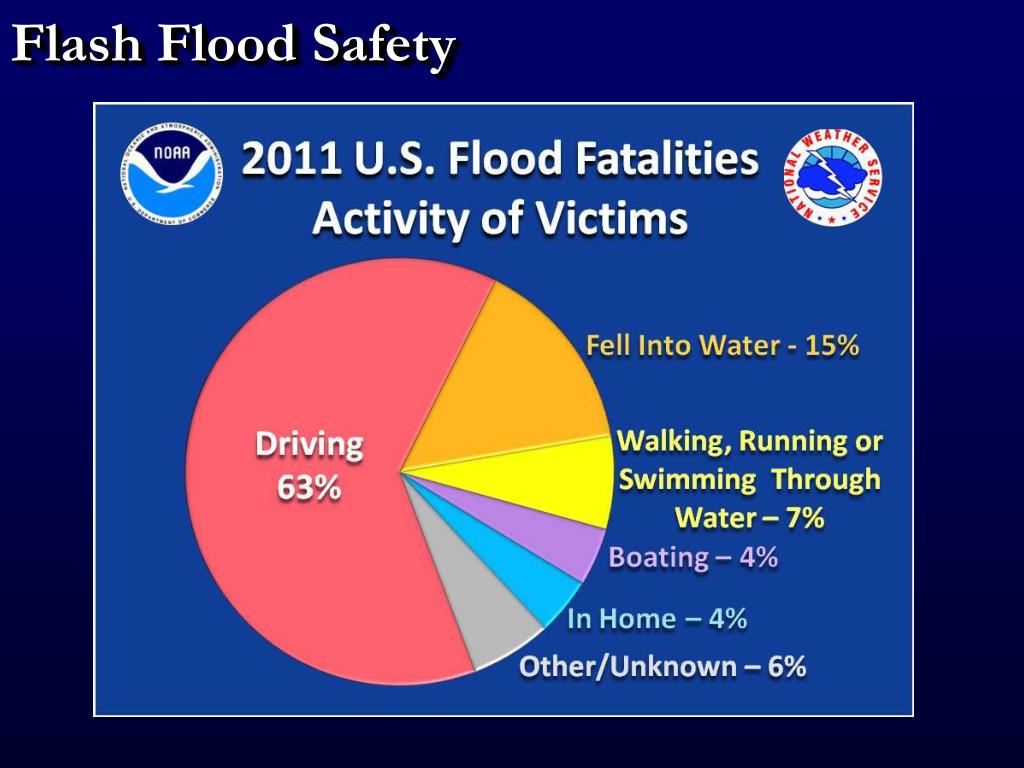What Is A Flash Flood Emergency? Preparedness And Response

Table of Contents
Understanding Flash Flood Risks
Defining a Flash Flood
A flash flood is characterized by its rapid onset and short duration, involving a significant volume of water overwhelming normally dry areas. Unlike slower-developing river floods, flash floods can transform a landscape in minutes.
-
Causes: Flash floods are frequently triggered by:
- Intense rainfall over a short period.
- Dam or levee failures, releasing large volumes of water suddenly.
- Rapid snowmelt in mountainous regions.
- Mudslides and debris flows blocking waterways.
-
Flash Flood vs. Regular Flood: The key difference lies in the speed of onset and duration. Flash floods are sudden and intense, while regular floods develop more gradually over hours or days.
Identifying High-Risk Locations
Certain geographical areas are particularly vulnerable to flash floods due to their physical characteristics. Identifying these high-risk locations is crucial for proactive preparedness.
- Mountainous Regions: Steep slopes accelerate water runoff, increasing the likelihood of flash flooding downstream.
- Areas with Poor Drainage: Regions lacking adequate drainage systems are more susceptible to water accumulation and flooding.
- Dry Creek Beds and Arroyos: These seemingly harmless channels can rapidly become raging torrents during heavy rainfall.
- Near Rivers and Streams: Areas close to water bodies are at higher risk of overflowing banks and rapid inundation.
To check your specific location's flood risk, consult your local authorities or use online resources such as flood risk maps provided by government agencies (search for "[your area] flood risk map").
Preparing for a Flash Flood Emergency
Developing a Flash Flood Preparedness Plan
Creating a family emergency plan is paramount. This plan should include:
- Evacuation Routes: Identify multiple escape routes from your home and workplace, considering potential road closures.
- Meeting Points: Designate a primary and secondary meeting point in case family members are separated during a flood.
- Communication Strategies: Establish a method for communicating with family members, such as a designated contact person or a group text message thread.
Before a flash flood:
- Gather emergency supplies (water, non-perishable food, first-aid kit, medications, flashlights, batteries).
- Secure important documents and valuables in waterproof containers or on higher floors.
- Identify safe locations in your home (upper floors, sturdy structures).
- Sign up for emergency alerts and warnings from your local authorities (e.g., NOAA Weather Radio, local emergency app).
Recognizing Warning Signs
Being vigilant and recognizing warning signs is crucial for timely action:
- Rising Water Levels: A rapid increase in water levels in streams, rivers, or normally dry areas.
- Rapid Increase in Stream Flow: An unusually swift current in a waterway indicates increased water volume.
- Changes in Water Color: Murky or debris-filled water suggests increased runoff.
- Unusual Sounds: Rushing water, roaring sounds, or unusual noises from nearby waterways.
Heed all weather warnings and advisories issued by meteorological agencies. These alerts are your crucial early warning system for impending flash floods.
Responding to a Flash Flood Emergency
Evacuation Procedures
If a flash flood warning is issued, immediate evacuation is paramount:
- How and When to Evacuate: Follow instructions from emergency services and evacuate immediately, even if the flood appears minor.
- Safe Evacuation Routes: Use designated evacuation routes and avoid flooded areas. Never attempt to drive through standing water.
- Evacuating with Pets: Secure pets in carriers and take them with you during evacuation.
Staying Safe During a Flash Flood
If caught in a flash flood, prioritize your safety:
- Seek Higher Ground: Immediately move to higher ground, away from the floodwaters.
- Avoid Driving Through Flooded Areas: Even seemingly shallow water can sweep a vehicle away.
- Vehicle in Rising Water: If your vehicle is caught in rising water, abandon it and seek higher ground immediately.
- Protection from Debris and Contaminated Water: Protect yourself from debris carried by the floodwaters and avoid contact with contaminated water.
Post-Flash Flood Actions
Assessing Damage and Seeking Help
After the flash flood:
- Contact Emergency Services: Report any damage or injuries to emergency services.
- Insurance Companies: Contact your insurance company to report flood damage to your property.
- Safe Cleanup: Clean up debris and contaminated water safely, avoiding contact with floodwaters. Seek professional help if needed.
- Local Authorities and Relief Organizations: Contact local authorities and relief organizations for assistance and support.
This article has highlighted the dangers of flash floods, emphasizing the critical need for preparedness and an effective response strategy. Understanding flash flood risks, developing a comprehensive preparedness plan, and knowing how to react during and after a flash flood are vital steps in mitigating potential harm. By proactively preparing and responding appropriately to flash flood warnings, you significantly reduce the risks to life and property. Remember, staying informed about weather forecasts and local alerts is key to mitigating the effects of a flash flood. Don't delay; take the necessary steps today to prepare for a flash flood emergency. Learn more about flash flood safety and preparedness in your area and stay safe!

Featured Posts
-
 Conchita Wurst And Jj Eurovision Village Concert Esc 2025
May 25, 2025
Conchita Wurst And Jj Eurovision Village Concert Esc 2025
May 25, 2025 -
 Glastonbury 2024 Unconfirmed Us Band Teases Festival Appearance
May 25, 2025
Glastonbury 2024 Unconfirmed Us Band Teases Festival Appearance
May 25, 2025 -
 Market Rally Euronext Amsterdam Stocks Climb 8 On Trumps Tariff Decision
May 25, 2025
Market Rally Euronext Amsterdam Stocks Climb 8 On Trumps Tariff Decision
May 25, 2025 -
 Repetitive Documents Ai Creates A Profound Poop Podcast
May 25, 2025
Repetitive Documents Ai Creates A Profound Poop Podcast
May 25, 2025 -
 Nvidias Rtx 5060 Launch A Warning For Gamers And Tech Reviewers
May 25, 2025
Nvidias Rtx 5060 Launch A Warning For Gamers And Tech Reviewers
May 25, 2025
